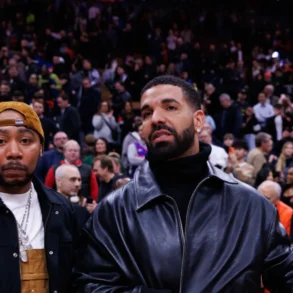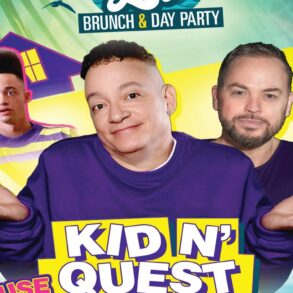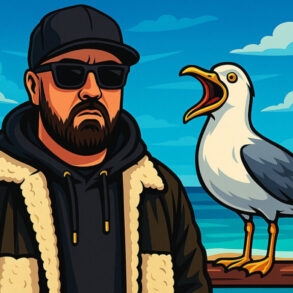
Jam Master Jay smiled and gave one of his assassins an embrace in the final seconds before he was gunned down in his Queens studio in 2002, according to testimony in Brooklyn court Monday.
The pioneering Run DMC DJ’s involvement in the cocaine trade was also discussed in detail for the first time, called a “way to make ends meet” in a stark turnaround from the hip-hop group’s public anti-drug stance.
Jay — whose real name was Jason Mizell — died in what prosecutors said was a revenge killing after he became tied up in dealing drugs as a way “to make ends meet,” witnesses told the jury in the trial of his two alleged killers.
“Jason smiled. He smiled and he kind of gave the guy a pound,” lifelong friend Lydia High testified while crying on the stand. “And then he, and then he, and then he said, ‘Oh s–t!’”
High told jurors she went to the studio that night to have Mizell sign some paperwork after landing a major record deal for one of his artists at JMJ Records, a label founded by Mizell.
High recalled nervously under questioning from Assistant US Attorney Artie McConnell that she was able to get the hip-hop pioneer to sign off on the papers before the gunman — believed to be Karl Jordan Jr., Mizell’s godson — walked into the studio and shots were fired.
When she heard the pops of the gun, High screamed and jumped off a couch for a quick exit out of the studio’s main door, but was stopped by another man — allegedly Ronald Washington, also known as “Tinard,” — who ordered her to get on the ground and held a gun to her head.
Susan Kellman, Washington’s attorney, asked High under cross examination if Washington might have been telling her to get on the ground to protect her — but prosecutors quickly objected and Judge LaShann DeArcy Hall ordered the question stricken from the record.
High testified that she tried avoiding the studio — and was put off when she noticed Mizell’s gun resting on the couch’s armrest on the night of the shooting.
High said earlier that the gunman had a “tattoo on his neck.”
Uriel “Tony” Rincon, who was shot in the long-unsolved crime, testified earlier in the trial that he knew Jordan, whose nickname is “Little D,” was the killer by his profile and a “Golden Child” neck tattoo.
Jordan and Washington are facing charges of murder while engaged in narcotics trafficking conspiracy in the Oct. 30, 2002 death of the iconic DJ.
Prosecutors have said that the pair’s deadly ambush was fueled by “greed and revenge” after they were stiffed from a drug deal in Baltimore.
Ralph Mullgrav, a convicted drug dealer, told jurors Monday about how Mizell started dipping his toes into cocaine trafficking as a way to pay off bills — which prosecutors alleged happened after the money from Run-DMC’s heyday started to run out.
“Jason wasn’t a drug dealer. He just used it to make ends meet here and there,” Mullgrav said.
Mullgrav testified that Mizell had been a smaller player in the drug game — dealing about 1-2 kilos of cocaine “here and there” before he approached him to “move” a larger amount from the Midwest in August 2002.
Mizell was looking to push a “few keys” — 10-20 kilograms of cocaine — but wanted Washington involved in the deal, which was a problem, Mullgrav testified.
“He wanted me to work with Tinard. I told him no,” Mullgrav said, explaining that he grew up with Washington in Queens and didn’t like him.
He later testified that he was going to “shoot Tinard” when he made an impromptu visit to Baltimore in Mizell’s car around the time.
Mullgrav spent 12 years in prison on a federal drug conviction before his release in 2013. He said in court that he sold cocaine with around 25 people working for him.
His testimony came only after he was arrested and spent seven days behind bars for refusing to testify after being served a subpoena, according to Gary Farrell, an attorney appointed to Mullgrav.
The trial will continue Tuesday.
This post was originally published on this site be sure to check out more of their content.






